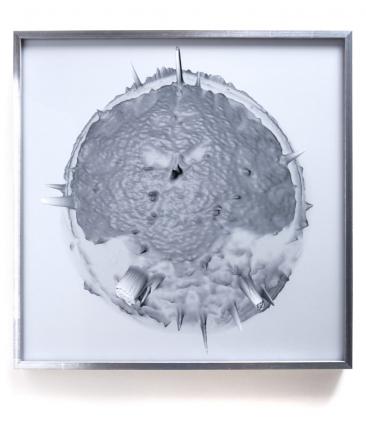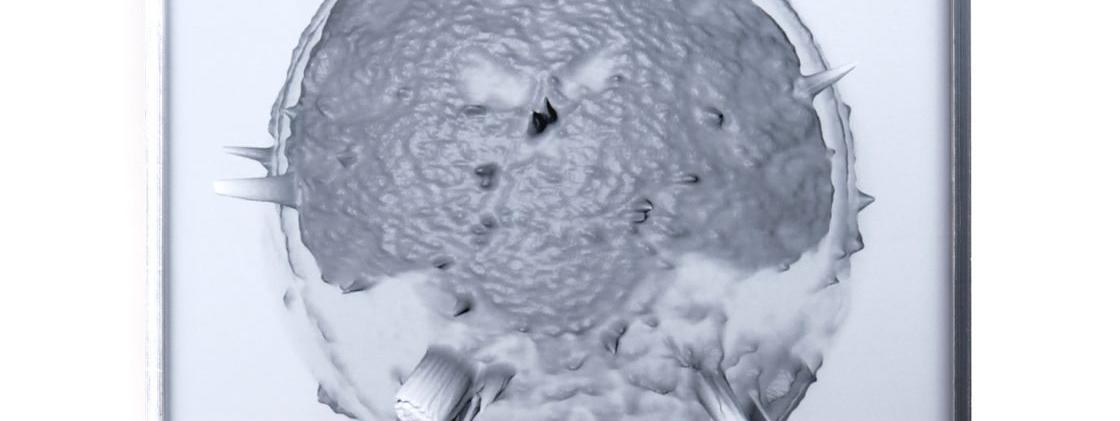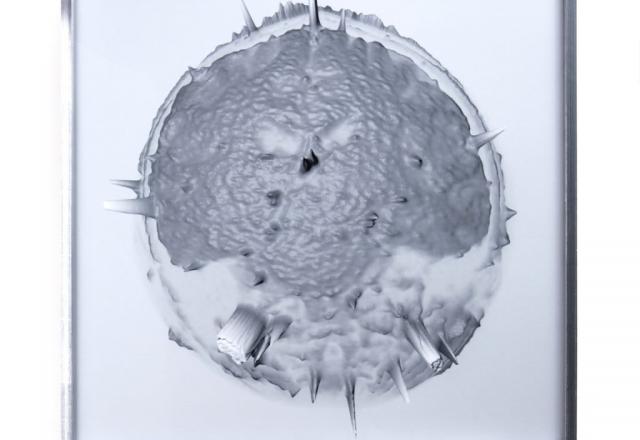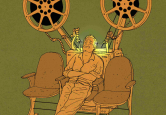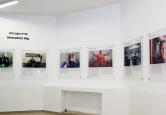“I think of it as painting with tools of technology” – Paula Crown
The self-portrait is among the most prevalent subjects in art history. Typically, it involves using a mirror to capture the surface information which is then selectively conveyed to the audience. With any luck, the artist’s internal life will shine forth from these external details. Of course, no objective portrait exists. The artist’s perception always colors his/her view of the subject, and the viewers’ perceptions color their interpretations.
The multimedia work INSIDE MY HEAD: A Contemporary Self Portrait (2013) began with MRIs of Crown’s brain. Beset by migraines since childhood, she animated these high-tech images of her internal landscape and projected them on concave screens. The piece is a self-portrait rendered from the inside out, an intimate view of her personal topology. Altered and viewed in an alternative scale, the images evoke the cosmos and its starscapes, from which we evolved.
The work, initially installed at The Aspen Institue in 2013 and then at The Dallas Contemporary in 2014, includes two large convex screens, mounted on customized metal frames, which face each other in the center of the space. The viewer—standing directly between the screens—observes the passage of seemingly abstract patterns. However, upon closer observation, these images, with their pulsating accumulation of shapes and forms, reveal the workings of the artist’s own brain, documented via a magnetic resonance image (MRI).
As Crown states, “I view them as abstract forms and topologies that could be micro or macro in size.” Although Crown has said that landscapes capture her attention and she researches topologies and maps, there is not narrative or symbolism to her work. It’s the various shapes and patterns that interest her. My work is “just a connection between what is happening in our bodies and what is happening in the larger world,” she says.
In addition to the framed, manipulated scans, The Dallas Contemporary installation included a room in which the viewer could experience something like an MRI. Visuals and audio envelop the viewer as he/she stands between two screens with varying projections of Crown’s brain rolling up and down and zooming in and out on the convex screens. The accompanying sounds (composed specifically for this piece) are not the hammering noise of an actual MRI scanner but a soothing violin, a musical interpretation of the activity of Crown’s brain. As the shapes change so does the music. “The music is my brain’s anatomy that was literally put into a software program and converted to sound,” Crown explains. “Then a violinist played to the animation of the brain scans.”




